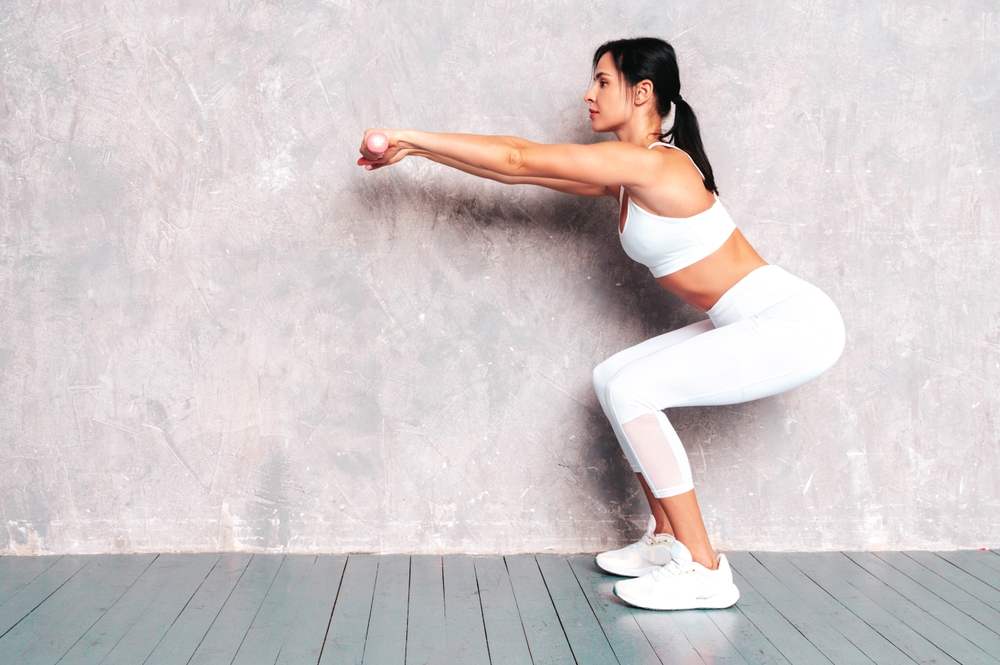Many stretches and exercises can help you gain strength, increase flexibility, and improve healthy range of motion. You may engage in stretches before a workout or after going to the gym. Some stretches and exercises are more popular than others, and you might wonder which ones work best for you. Stretches and exercises can impact you in different ways depending on your age, body type, level of physicality, and other factors. So if you experience discomfort while doing a certain stretch like toe touches, then you might wonder, “are toe touches bad for your back?” Toe touches, also known as forward bends, are a common exercise that involves bending forward at the waist and reaching your hands toward your toes. While this can be beneficial for stretching the hamstrings and lower back muscles, it can also be harmful in certain situations. Here’s what you need to know about toe touches and exercises you can try instead.
Why Are Toe Touches Bad for Your Back?
Toe touches can be harmful to your back if not done correctly or if you have certain pre-existing conditions. Exercises like toe touches can also result in pain or other issues if you do not have good flexibility in these muscles because you may compensate by rounding your lower back and straining other muscles. When you bend forward and stretch your arms toward your toes, this type of stretch primarily engages the lower back, hips, buttocks, and hamstrings. Here are a few ways toe touches can be bad for your back.
Stress on Lumbar Spine
Toe touches can put too much stress on your lower back and lumbar spine. The lumbar spine refers to the section of your spine in the lower back made up of five vertebrae, which are the largest and strongest vertebrae in the spine. The lumbar spine is responsible for supporting the weight of your upper body and supporting movements like twisting and bending. Issues with the lumbar spine can lead to a variety of symptoms, such as pain, stiffness, and muscle weakness.
Pressure on Spinal Discs
When too much pressure or stress is applied to the spine, it can also aggravate or damage spinal discs. In between most vertebrae in the spine are spinal discs that act as shock absorbers and protect the vertebrae from rubbing against one another. Too much pressure on a spinal disc can result in a bulging or herniated disc, both of which can cause a variety of uncomfortable symptoms. Bending forward and putting too much pressure on the spine, like with toe touch exercises, can further aggravate damaged spinal discs and negatively impact their ability to support the spinal discs in your lower back.
Aggravate Pre-Existing Conditions
If you have a pre-existing condition like a herniated disc, the added stress from toe touches can exacerbate your pain and discomfort. Other pre-existing conditions like arthritis or spinal stenosis can become aggravated by certain stretches and exercises like toe touches that can put too much pressure on the injured or damaged area. If you have any pre-existing conditions or pain, you should consult with your back pain specialist before starting any new exercises to ensure these activities are safe for you to perform.
Exercises You Can Do Instead of Toe Touches

Instead of doing toe touches to stretch out your hamstrings and lower back, try these other exercises for lower back pain.
Seated Hamstring Stretches
You don’t need to touch your toes to stretch out your hamstrings. In fact, you can even stretch your hamstrings while seated in a chair. Sit tall in a chair with good posture and place both feet on the floor. Slowly straighten one leg and flex your feet, so your toes pull back toward your shins. Then gently lean forward at the hips and hold for 10-30 seconds before returning to start and repeating this stretch on the other side.
Lying Hamstring Stretch
You can also stretch out your hamstrings while lying on the ground or on a mat. With your legs fully stretched out, bend one leg and bring your knee to your chest and slowly straighten your leg. Hold this for 10-30 seconds before gently returning your leg to the floor. Then switch to the other leg. You can repeat these alternating movements for a continued hamstring stretch.
Alternating Toe Taps
Toe taps are a popular exercise you can do while standing that offer a dynamic workout and can also be used for conditioning. This exercise utilizes a step, box, or other stable structure 10-12 inches tall. Standing in front of this structure, you will place one foot on the box with the ball of your foot. You will then push off from the planted foot and bring it up to the box while bringing the other foot back down to the ground at the same time. You will then alternate feet and do so without stopping for a set period.
Wall Squats
Wall squats, sometimes referred to as wall sits, activate many muscle groups in the lower body, including your hamstrings. Stand against a wall with your feet slightly out in front of you and hip-width apart. Then slowly lower your upper body down the wall until your knees reach a right angle. Then stand back up and repeat this movement a designated number of times.
Elevated Donkey Kicks
Elevated donkey kicks are an exercise you can do on your hands and knees that engage your core and leg muscles. Your hands should be in line with your shoulders and your knees in line with your hips. You will then lift your foot behind you with a kicking motion toward the sky. Repeat this for 10-15 reps on both sides.
Get Your Back to Its Best Shape with Us!
Get in your best shape when you partner with our spine specialists at Pro-Care Medical Centers near you. Call or book online to get started today and learn more about what stretches and exercises work best for you.



